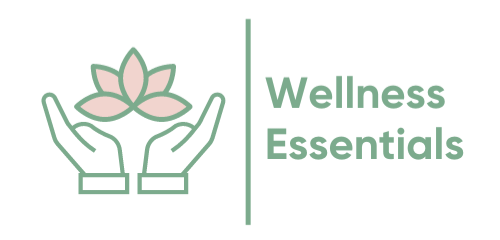Table of Contents
ToggleThe Keto diet, short for the ketogenic diet, has gained immense popularity in recent years as a go-to method for weight loss and overall health improvement. But what exactly is this diet, how does it work, and is it right for you? In this comprehensive guide, we’ll delve into the ins and outs of the Keto diet, exploring its benefits, potential drawbacks, who should consider it, and what foods are typically included.
What Is the Keto Diet?
The ketogenic diet is a high-fat, low-carbohydrate eating plan that aims to shift your body’s metabolism from relying on glucose (sugar) as its primary fuel source to using fats instead. This metabolic state is known as ketosis. In ketosis, the liver converts fat into molecules called ketones, which the body uses for energy.
To achieve ketosis, followers of the Keto diet typically consume about 70-75% of their daily calories from fat, 20-25% from protein, and only 5-10% from carbohydrates. This drastic reduction in carbohydrate intake forces the body to use fat as its main source of energy.
The Pros
- Effective Weight Loss: One of the main reasons people turn to the Keto diet is its effectiveness in promoting weight loss. By reducing carbohydrate intake, the body is forced to burn stored fat, leading to weight loss, especially in the initial stages of the diet.
- Appetite Control: Many people report feeling less hungry on the Keto diet, which can make it easier to stick to a calorie deficit and lose weight. This is partly because fats and proteins are more satiating than carbohydrates.
- Improved Blood Sugar Control: The Keto diet has been shown to lower blood sugar levels and improve insulin sensitivity, making it beneficial for people with type 2 diabetes or those at risk of developing the condition.
- Increased Mental Clarity: Some followers of the Keto diet report experiencing enhanced focus and mental clarity. This is thought to be due to the steady energy supply from ketones, as opposed to the spikes and crashes associated with glucose.
- Reduced Inflammation: This diet may help reduce inflammation in the body, which is linked to various chronic diseases. This is likely due to the reduction in processed foods and sugars.
The Cons
- Keto Flu: As the body adjusts to burning fat instead of carbohydrates, many people experience flu-like symptoms known as the “Keto flu.” Symptoms can include headaches, fatigue, irritability, and nausea, typically lasting a few days to a week.
- Nutrient Deficiencies: The restrictive nature of the Keto diet can lead to deficiencies in certain nutrients, particularly fiber, vitamins, and minerals found in fruits, vegetables, and whole grains.
- Digestive Issues: Some people experience digestive problems like constipation due to the low fiber intake on the Keto diet. This can be mitigated by including fiber-rich, low-carb vegetables in your diet.
- Social and Dietary Restrictions: The Keto diet can be challenging to maintain in social situations or when dining out, as it requires strict adherence to low-carb foods. This can make it difficult to follow in the long term.
- Potential Health Risks: While the Keto diet can be beneficial for many, it may not be suitable for everyone. People with certain medical conditions, such as liver or kidney disease, should consult a healthcare professional before starting the diet.

Who Is the Keto Diet For?
The Keto diet may be suitable for:
- Individuals looking to lose weight and reduce body fat.
- People with type 2 diabetes or prediabetes seeking to improve blood sugar control.
- Those with neurological conditions like epilepsy, as the diet has been shown to reduce seizures.
- Athletes or individuals aiming to maintain muscle mass while losing fat.
However, it may not be ideal for:
- Pregnant or breastfeeding women.
- Individuals with existing liver or kidney conditions.
- People with a history of eating disorders.
- Those who prefer a more flexible or balanced diet.
Why Follow the Keto Diet?
People choose to follow this diet for various reasons, including weight loss, improved energy levels, better blood sugar control, and mental clarity. Some also find that the diet helps them feel more in control of their hunger and cravings, making it easier to maintain a healthy lifestyle.

Foods to Eat on the Keto Diet
The Keto diet emphasizes foods that are high in fat, moderate in protein, and low in carbohydrates. Here are some examples of foods to include:
- Healthy Fats: Avocados, olive oil, coconut oil, butter, ghee, nuts, and seeds.
- Proteins: Meat (beef, pork, chicken), fatty fish (salmon, mackerel), eggs, and low-carb dairy (cheese, heavy cream).
- Low-Carb Vegetables: Leafy greens (spinach, kale), cruciferous vegetables (broccoli, cauliflower), zucchini, and bell peppers.
- Berries: Small amounts of low-carb fruits like strawberries, blueberries, and raspberries.
- Beverages: Water, coffee, tea (unsweetened), and bone broth.
Foods to Avoid on the Keto Diet
To maintain ketosis, it’s important to avoid foods high in carbohydrates, such as:
- Sugary Foods: Sodas, candies, cakes, and pastries.
- Grains and Starches: Bread, pasta, rice, and cereal.
- High-Carb Fruits: Bananas, apples, oranges, and grapes.
- Legumes: Beans, lentils, chickpeas, and peas.
- Alcohol: Beer and sweetened cocktails.

Conclusion
The diet offers numerous benefits, especially for those looking to lose weight and improve blood sugar control. However, it’s not without its challenges and potential drawbacks. Before starting the Keto diet, it’s essential to consider your health goals, lifestyle, and any underlying medical conditions. Consulting with a healthcare provider or nutritionist can also help ensure that the Keto diet is the right choice for you.
If you’re ready to embrace a high-fat, low-carb lifestyle, the Keto diet could be an effective way to achieve your health and wellness goals. Just remember to stay informed, listen to your body, and make adjustments as needed to enjoy a sustainable and healthy diet.
>>>> Get Your Custom Keto Plan Now

